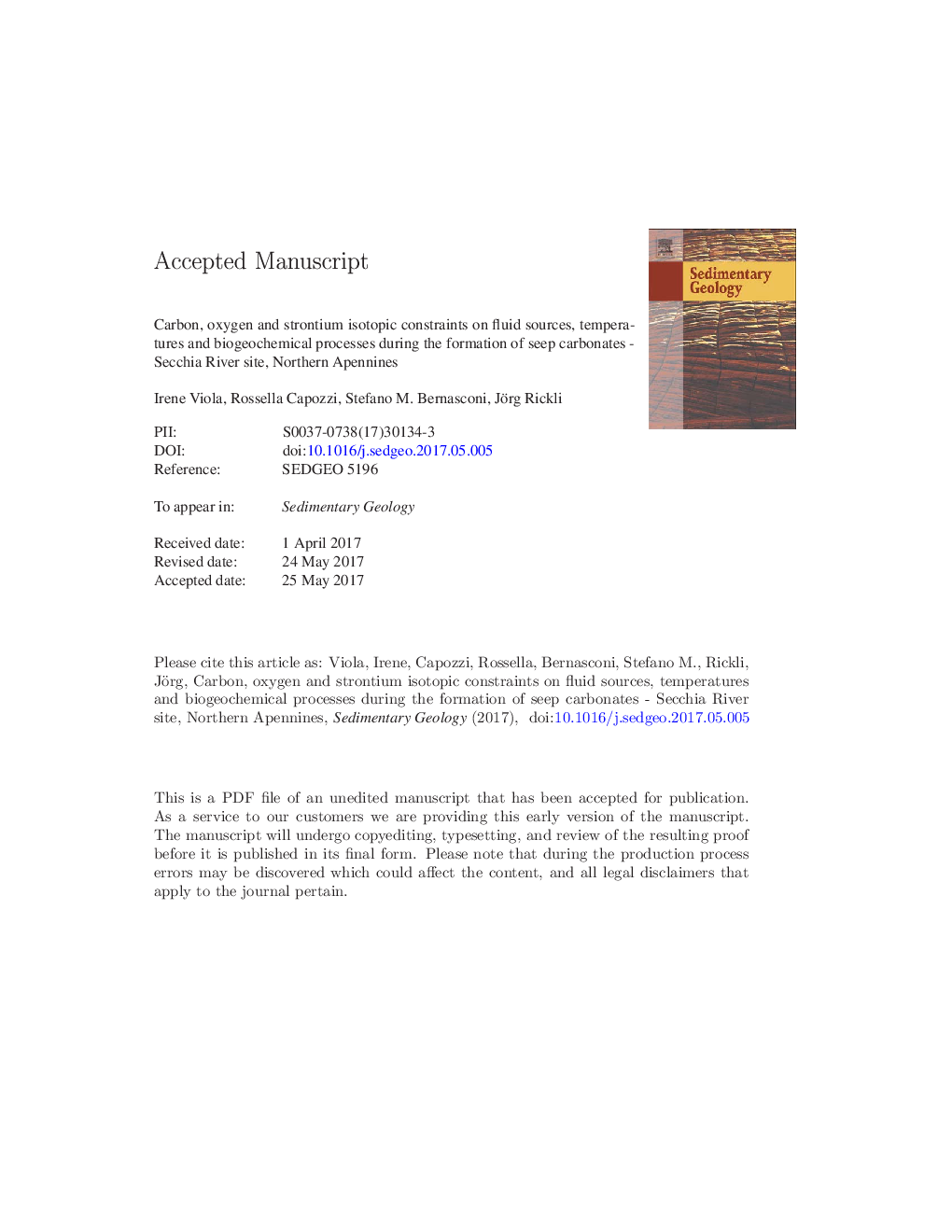| Article ID | Journal | Published Year | Pages | File Type |
|---|---|---|---|---|
| 5781294 | Sedimentary Geology | 2017 | 37 Pages |
Abstract
Authigenic globular carbonate concretions and carbonate chimneys are interspersed along the strata throughout the section. A comprehensive geochemical characterisation of the carbonates has been carried out to understand the processes leading to their formation. The carbonate concretions are the record of past hydrocarbon vents linked to the Miocene petroleum system of the Northern Apennines. The samples are composed of > 50% microcrystalline dolomite. The δ13C signatures identify two groups in the samples according to different type of formation processes. Globular concretions have positive values that suggest an influence of CO2 associated to secondary methanogenesis due to microbial degradation of higher hydrocarbons. The analysed chimney, with negative δ13C values, is interpreted as former conduit where carbonate precipitation is promoted by Anaerobic Oxidation of Methane coupled with Sulfate Reduction. The δ18O range, coupled with 87/86Sr signatures, indicate that the contribution of deep connate water from the Miocene reservoirs is up to 23% during the formation of the globular concretions. The connate water occurrence is also documented by higher ambient temperatures. The different isotope signatures in seep carbonates result from the relative contribution of the recognised gas and water components, linked to different plumbing systems and fluid supply from a well-defined hydrocarbon field. The seep carbonate characteristics have enlightened variations in biogeochemical processes, which can be rarely quantified in ancient and present-day marine environments.
Related Topics
Physical Sciences and Engineering
Earth and Planetary Sciences
Earth-Surface Processes
Authors
Irene Viola, Rossella Capozzi, Stefano M. Bernasconi, Jörg Rickli,
